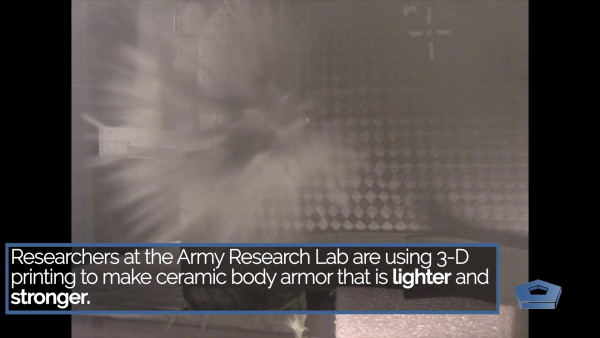

If diamond are a girl’s best friend, then pearls may soon be a soldier’s — sort of.
An Army-funded research project has produced a lightweight plastic compound that’s both stronger and lighter than steel by “mimicking” the outer coating of peals known as nacre (or mother of pearl), the Army Research Lab announced on Tuesday.
The material is eight times lighter and 14 times stronger than steel, according to the Army Research Office-funded researchers at the University of Buffalo in New York who recently detailed potential military applications in the journal Applied Polymer Material.
“The material is stiff, strong and tough,” University of Buffalo engineering professor Dr. Shenqiang Ren said in the ARL news release. “It could be applicable to vests, helmets and other types of body armor, as well as protective armor for ships, helicopters and other vehicles.

A new lightweight plastic that is 14 times stronger and eight times lighter (less dense) than steel may lead to next-generation military armor (University at Buffalo)
Most of the new material is composed of ultra-high-molecular-weight polyethylene (or the vaguely more pronounceable UHMWPE), the same souped-up plastic that researchers at the Natick Soldier Research, Development and Engineering Center (NSRDEC) used to develop a lightweight prototype helmet back in 2017.
The Buffalo researchers tasked with working on UHMWPE “studied mother of pearl, which mollusks create by arranging a form of calcium carbonate into a structure that resembles interlocking bricks,” according to the ARL release, resulting in “an extremely tough outer shell with a more flexible inner backing that’s capable of deforming and absorbing projectiles.”
“The material the research team developed also has high thermal conductivity,” the release added. “This ability to rapidly dissipate heat further helps it to absorb the energy of bullets and other projectiles.”

Round, smooth and iridescent, pearls are among the world’s most exquisite jewels; now, these gems inspire U.S. Army researchers looking to improve military armor. (Army Research Laboratory/Shutterstock)
Given that ARL-backed research into ultra-strong materials like UHMWPE is still ongoing, there’s clearly no target date to field pearl-inspired body armor to soldiers downrange, but the material (and it’s producers in the U.S. industrial base) is clearly on the Pentagon’s radar.
“In contrast to steel or ceramic armor, UHMWPE could also be easier to cast or mold into complex shapes, providing versatile protection for soldiers, vehicles, and other Army assets.” ARO materials design program manager Dr. Evan Runnerstrom said in the ARL statement.
Just don’t give it to anyone for an anniversary.